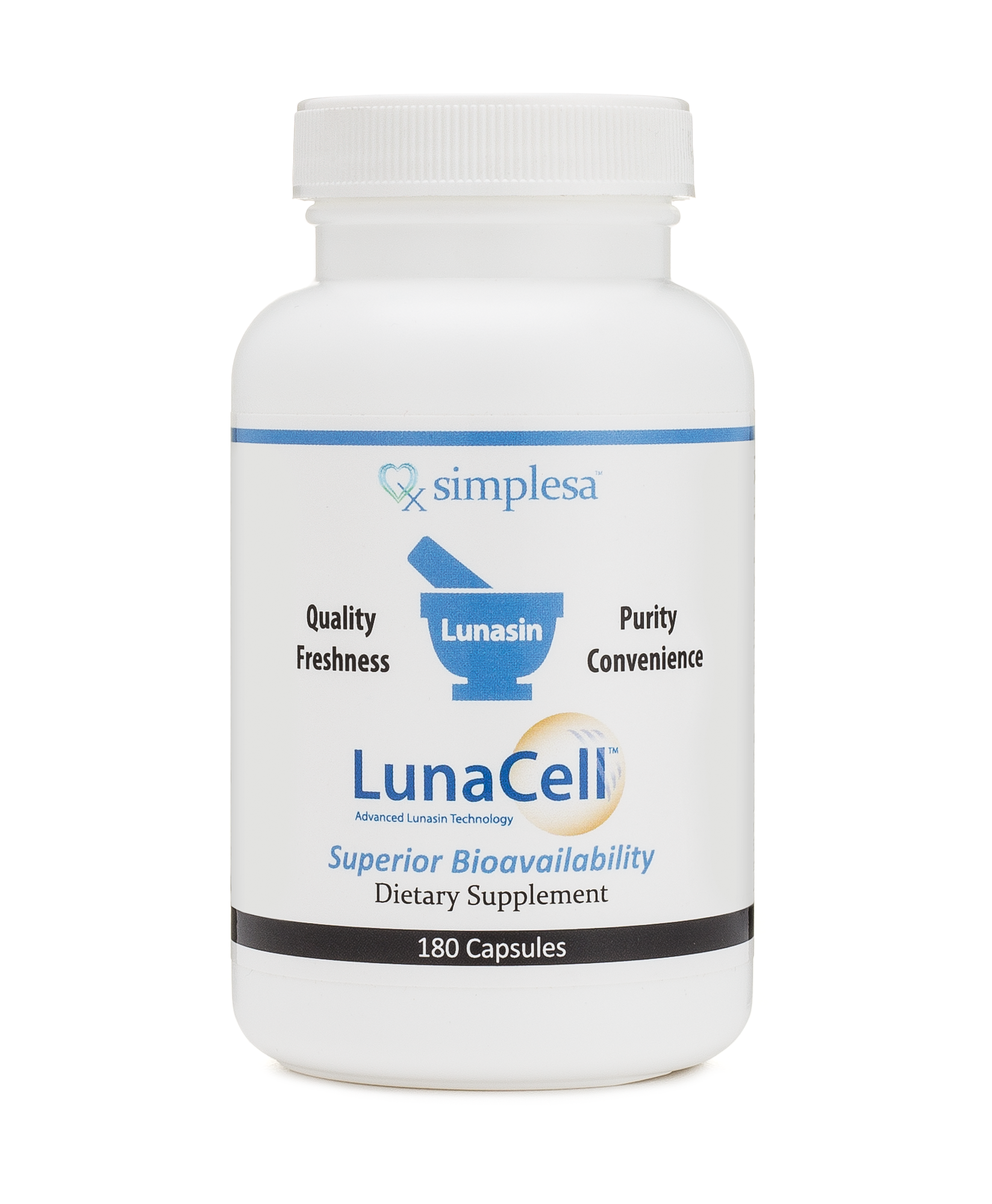If you’ve ever known anyone with ALS, it’s heart-breaking to watch.
One day they’re walking, cooking, doing yard work, and living a normal life.
Next day, you watch as they keep tripping over the edge of the carpet…
…can hardly make it through a meal without coughing……and their fingers refuse to close around a mug handle for a simple sip of coffee.
Every 90 Minutes Someone Gets the News…
Some catch it early.
Most, like Paul, catch it in their 60s.
“My wrist hurts when I twirl it around. I get tremors. Body twitching.”
“What bothers me the most is my face. My tongue won’t cooperate anymore. And my words are so slurred, my wife can’t understand me half the time. It’s insanely frustrating!”
And he knows it will only get worse.
His family dreaded the day in the future when Paul would likely not be able to walk or even breathe.
152 years after its discovery, ALS continues to strike without warning [3]. Every year, ALS turns the lives of 6,000 Americans into a living nightmare. [2]
It’s Like the Body Stops Listening To the Brain’s Command
While scientists can’t yet pinpoint why some people get ALS, they know the downward spiral is caused by nerve damage…
Damage that chips away at the lining of a special type of nerve; motor neurons.
Think of motor neurons like the wiring that connects lights in your living room to a switch. Normally, you flip the switch, and all the lights go on.
The problem is… once ALS shows up on the scene, these wires start to erode and deteriorate.
One day you walk into your living room and flip the switch, expecting brightness.
This time, only half the lights illuminate.
The other light bulbs are still there.
But they remain dark. Those wires failed.
They never heard the command to turn on.
A similar thing happens to the motor neurons connecting the brain to the spinal cord of an ALS patient.

It’s a tidal wave that forces more neurons off the grid. They lose their ability to talk to muscles in the arms, legs, chest, throat and mouth.
It’s like the brain keeps talking in a language the muscles can no longer understand.
If you or your loved one has ALS, this is when they need help dressing and showering.
Others may notice one arm losing strength.
The sad truth is… 4 out of 5 people with ALS are likely to suffer asymmetric limb weakness. [1]
One side of the body works. The other side grows frail and atrophies.And while scientists have yet to figure a clear-cut treatment…
Here’s a Ray of Sunshine in a Dark Sky
In this special report, I’m going to show you a breakthrough protocol… that uses nutrients found naturally in the body… to help 7 out of every 10 people who try it. [8]
That’s not all…
…while you’d expect everybody to respond differently, more than half the people who follow this methodology report elevated energy levels and…73% report a reduction in muscle tremors. [8]

What makes this protocol work is, it takes a different approach:
Instead of focusing on the symptoms, it helps brain nerves survive the ALS toxic tsunami wave.
What’s the toxic tsunami wave?
Well, scientists have long known this is one of the first red flags that… flips the environment of surrounding brain nerves to go from livable to a living hell.
Case in point, it only takes 24 hours for this destructive cocktail to start deteriorating brain neurons. [6]
And this is important because, the deterioration (and death) of these neurons is the reason why ALS patients start feeling their muscles weaken and ultimately become paralyzed.
What Spanish Scientists Discovered While Saving Neurons of Stroke Survivors That May Help Those With ALS
A few years ago, a team of Spanish scientists set out to figure the best way to save the most brain nerves after someone had a stroke. [6]
This is especially challenging because, the worst hit area (the core zone) suffers an extreme drop in blood flow. As you’d expect, this leaves brain nerves without oxygen and glucose.
In short, leaving brain nerves with no way to produce energy.
The longer this goes on, the more brain neurons perish.
No energy, no life. Remember that.
The Spanish scientists witnessed another phenomenon that accelerates the death of neurons.
- In a healthy brain, glutamate is a friend. This essential amino acid helps neurons talk to each other. It also helps us with memory and learning.
- When someone suffers a stroke, glutamate is a foe. It’s bad news because glutamate levels in the brain spike to 10 times normal levels, contributing to the deterioration of the brain… [6]
Triggering a Toxic Tsunami That Kills Brain Neurons
The rising glutamate is like an accelerating tidal wave:
Glutamate shoots up to levels the body can’t handle.
As you already know, this pushes motor neurons to deteriorate and die.
As these cells die, they burst, releasing more glutamate into the system.
This in turn, elevates glutamate levels even higher, affecting more neighboring cells.
You can probably guess what happens to those neighboring cells? They too die and burst, releasing more glutamate.
And so on and so on until the body is flooded with toxic levels of glutamate. It’s a vicious downward spiral.

When there is a flood of glutamate in our brains, it’s almost as if the wiring stops connecting with the rest of the body, like in our light switch example.
Just like with stroke victims, we believe the same phenomenon of unplugging the brain communicator cells from the rest of the body is at play when it comes to ALS.
So What Can You Do About It?
Many people suffer needlessly because they don’t know their options.
For example, you might think that the most effective approach is pressing the brakes on that glutamate ‘toxic tsunami.’
Afterall, that’s the approach used by one of the more popular solutions for ALS [1].
What kind of relief does it offer?
Only a median increased survival time of about two to three months.
What’s more, England’s National Health Service reports that patients who use it… ‘feel no different day-to-day.’ [10]
And while we always recommend consulting your physician on what would help you the most, we suspect you’re here for a reason…
…you want to leave no stone unturned because:
While we don’t know how many tomorrows we’ll have…
We Can’t Sit and Watch as Our Loved Ones Fade Away
That’s why, back in 2014, we decided to take a different approach to helping ALS patients live a better life.
Remember how the Spanish scientists discovered one reason that triggers neurons to perish is… they are left with no way to produce energy?
No energy. No life.
So, what’s the battery that energizes our cells?
It’s the mitochondria. When you build up the strength of this powerhouse, it can withstand the onslaught of glutamate.
So, instead of trying to stop the glutamate ‘toxic tsunami’ wave by changing the cell’s environment (as other popular solutions do), we’re arming neurons to survive that brutal toxic wave war.
The result is Simplesa’s AAKG+ core protocol blend.
AAKG+ is an advanced, four-in-one nutritional solution that’s purposely designed to help alter the course of ALS.
And it does this by fueling the cellular energy cycle. This, in turn, kicks the mitochondria’s ‘energy production capacity’ into high gear.
New energy. New life.

With consistent use, Simplesa’s AAKG+ helps ease muscle twitching, relieve body weakness and support elevated energy levels.
And while everyone responds differently, it’s not uncommon to hear comments like this one from Jennifer:
“It gives me the energy to stay up all day, like from 7 am to midnight.”
In a moment, you’ll get to hear 100 more reviews to help you decide if AAKG+ is right for you or your loved one.
First, let’s cover the 4 potent ingredients that make AAKG+ work.
The 4 neuro-nutrients are meticulously sourced and scientifically formulated right here in the USA… to ensure the highest absorption rates and uncompromising quality.
It starts with…
#1) The Key to Replenishing Our Cellular Battery
Alpha-Ketoglutarate (AKG) is a natural substance that’s concentrated in the cell’s mitochondria (the battery that energizes our cells) and the liquid gel which fills our cells.
AKG isn’t just a potent antioxidant, that also increases collagen production [11], it also plays a much bigger role:
It regulates the speed of cellular energy production.
Case in point, draining the levels of AKG in our cells is like pressing the breaks on the cell’s ability to produce energy.
And this happens because AKG works as an ‘energy donor’ in the Krebs cycle.
You may remember the Krebs cycle from science or biology class. Without getting too technical, the Krebs cycle is an 8-step chain reaction happening inside our mitochondria.
End result? Energy that powers all living cells.
Here’s where it gets interesting…
Scientists have long known that the cell’s energy production rate is linked to how fast we age. The lower our cellular energy is, the faster we age. [19]
So, researchers at the Buck Institute wanted to figure the impact of consuming AKG. [12, 13]
Could it put the usual signs of cell aging on time-out?
In the study, researchers divided 182 aging mice (55 years in human years) into two groups. Only one group of mice was fed a diet containing AKG.
Then, every 8 weeks the researchers would measure for signs of vitality and zest for life (such as eye health, tremors, grip strength, and curving of the spine among other signs of aging). This went on for 21 months, or for as long as mice were alive.
The result: the group that consumed AKG saw a 40% boost in healthspan.
What’s healthspan?
It’s not merely surviving as the years go by. It’s enjoying blissful days, free of the usual alignments and disabilities that come with age.
Walking, breathing, living and having a zest for life.
For those reasons, AKG is the key superstar ingredient we’ve included in Simplesa’s AAKG+.
It also includes…
#2) COQ10 to Shield Against Neuron Damage
You may have heard of CoQ10 and how it’s among nature’s most powerful antioxidants.
But did you know it’s more effective than vitamin E when it comes to protecting against cell neuron damage. [14]
And, neuron damage is one of the main reasons the brain communicator cells lose their ability to talk to the rest of the body.
In fact, studies show that CoQ10 might play a bigger role than we once thought when it comes to… helping turn around nerve damage (like ALS). [15] [16]

But that’s only part of the CoQ10 story.
It’s no coincidence that CoQ10 lives in the cell’s mitochondria (our energy powerhouse).
You see, CoQ10 isn’t just essential for helping the body patch up repair damaged cells, it’s also the spark your cells need to generate energy.
Just like AKG, it plays a crucial role in amplifying the cell’s energy production rate (the Krebs cycle).
Are you starting to see how CoQ10 plays two critical roles when it comes to ALS?
- On one level, it helps protect the mitochondria from damage (the potent antioxidant effect).
- While, at the same time, it boosts the mitochondria’s ability to produce energy. Energy it needs to survive the glutamate ‘toxic tsunami.’
For those reasons, we’ve included the most bioavailable form of CoQ10 in Simplesa’s AAKG+. But that’s not all, AAKG+ has one more ingredient that…
#3) Helps Squash The Toxic Tidal Wave
GABA (Gamma Aminobutyric Acid) is a chemical messenger in the brain. It has a calming effect.
Our body needs this to make it through stress and anxiety – without crushing our nervous system.
Simply put, it shields our nerve cells from being over-stimulated (stressed out).
Why is this important when it comes to ALS?
In healthy adults there’s a balance between GABA and glutamate.
The first calms our nerves, the second excites them. It’s like an on and off switch.
But what happens if the switch is always on?
Like a morning alarm clock that buzzes forever. No rest.
We suspect that’s what’s happening to the brain cells of someone with ALS. In fact, studies show that GABA levels diminish and dip as glutamate levels spike. [17]
Sounds familiar? This is the glutamate ‘toxic tsunami’ wave pushing neurons to the edge of existence.
There’s two more reasons for including GABA in AAKG+.
- Firstly, we want to replenish the body’s GABA stores – because low levels of GABA contribute to muscle spasticity and stiffness.
- And, secondly, GABA pushes back on the excessive glutamate levels… giving neurons a fighting chance against the toxic tidal wave.
Knowing that, we did extensive research to identify the most effective approach to…
#4) Help Brain Neurons Survive and Regrow
Niacin is a water-soluble B vitamin. Once in the body, it’s converted into the second most important coenzyme in the body; NAD (nicotinamide adenine dinucleotide).
Why is it so important?
Because it’s one of only a few coenzymes that directly impact the body’s ability to create and utilize energy.
In fact, supplementing with NAD has been shown to bump up the mitochondria’s ‘energy production capacity.’ [18]
What’s more, mental agility is often a sign of sufficient NAD levels in nerve cells. Why? Because it plays a key role in brain neuron development and survival.
Naturally, scientists wanted to put this to the test in the most extreme of conditions; stroke survivors.

You see, one of reasons a stroke (or spinal cord injury) cripples the person’s ability to move, or even feel their limbs is… the cell’s inability to regrow axons. [21]
What are axons? Simply put, it’s the thin ‘wire like’ structure of the neuron that helps it communicate with other neurons.
So, here’s what scientists at Oakland University did:
They simulated a stroke in lab rats by blocking blood flow to the brain for two hours. Then, they separated the rats into two groups. One group was fed a daily dose of niacin for 14 days. [20]
Scientists were amazed by the results: niacin plays a major role in supporting the nerve’s regeneration process (neurite outgrowth).
Can you see how this is relevant to ALS?
Case in point, scientists believe this nerve regeneration (neurite outgrowth) process is a critical factor in restoring neuron function after it’s damaged. [22]
By now, you can probably see why we’ve included Alpha-Ketoglutarate (AKG), GABA, Ubiquinol (CoQ10) and Niacin in Simplesa’s AAKG+ Core Powder.The 4 neuro-nutrients in AAKG+ aren’t just 100% natural, they’re also…
The Purest Form, Potent Compounds to Ensure the Highest Bioavailability and Purity
What this means is… we’ve gone to extreme lengths to source these 4 neuro-nutrients are in the purest, freshest and most effective form.
The same raw form supported by scientific research. (You can see the certificates of analysis right here.)
No fillers. No cutting corners because our client’s wellbeing depends on it.
It’s been our pledge since starting back in 2014; quality first.
That’s why, Simplesa’s AAKG+ is scientifically formulated and manufactured in the USA in an FDA inspected facility.
What’s more, the 4 neuro-nutrients in AAKG+ aren’t just designed to work in synergy… where the combined effect is far greater than taking each nutrient on its own… Simplesa’s AAKG+ is purposely designed to…
- Soothe away muscle discomfort and weakness. Instead of watching muscles waste away this helps your body get stronger.
- Increase mitochondrial energy output to help give you the energy you need to live life.
- Reduce anxious feelings and negative moods (start feeling like your normal self again).
- Sooth away muscle fatigue, leg cramps and muscle twitching that makes holding a cup of coffee near impossible.
- The most bioavailable form of CoQ10 (Ubiquinol) helps give further protection against cell neuron damage.
Thousands of men and women swear it helps slow down progression and improve their quality of life. And now, you can too.
How Much of a Difference Can AAKG+ Make?
Just ask Scot , Sarah, Ronnie and others…












And while I can’t promise a magic carpet ride (because everybody’s different), here’s how it’s been changing lives since 2014:

If you’ve read this far, I think you can see why…
You Too Can Benefit From AAKG+
We also made sure it’s not another stack of ‘hard to swallow’ pills.
Instead. it’s super simple to use:
- Simply add 1 leveled scoop to any beverage or food with a consistency that permits easy mixing.
- Stir until thoroughly mixed. (It tastes good and mixes well and easily with a shaker bottle.)
- Take three times daily or as directed by your health care practitioner.
As you’d expect, Simplesa’s AAKG+ has clearly spelled out ingredients (no mystery blend that leaves you wondering what’s in the mix):

Now, it’s perfectly normal to realize that… the only way to help you decide if AAKG+ is right for you or your loved one, is getting it into your hands (so you can start using it and noticing the difference it makes).
For that reason, we’ve done 3 things:
Firstly, you pay zero for shipping and handling.
Since AAKG+ isn’t available in health food stores, we’re eating the cost of shipping to get it into your hands as soon as possible (and let it start working for you or your loved one right away).
Secondly, you risk nothing by trying AAKG+ today.
All we ask is that you use it for 30 days. If, at any point in the next 90 days, you’re not satisfied with for any reason (or no reason at all), then return the empty bottles for a full, courteous refund.
Thirdly, because the results have been so positive, we’re trying to get it into the hands of more people who need relief now.
That’s why, for a limited time, you can take advantage of this exclusive offer…
Try AAKG+ Risk-Free at the Lowest Price and Get a Free Gift
If you tried to purchase just 2 of the 4 neuro-nutrients in AAKG+ at your local health food store… getting a 30-day supply of CoQ10 (Ubiquinol) and high-dose AKG… you could easily spend up to $318.5.
And you’d have no guarantee you’d get these neuro-nutrients in the most effective pure form compounds to ensure the highest bioavailability.
But thanks to this special offer, you can get all 4 neuro-nutrients in one convenient, easy to use solution (instead of having to mix and match what might be ‘hard to swallow’ pills)… for as little as $4.99 per day.
That could save you as much as $168.51 per month.
Here’s the best part, if you decide to go for the 60-day supply today…
You’ll Get 2 Free AAKG Powder Tubs (Worth $51.98)
Here’s why this is the perfect companion to Simplesa’s AAKG+…
As you already know, we’ve included Arginine Alpha-Ketoglutarate (AAKG), GABA, Ubiquinol (CoQ10) and Niacin in Simplesa’s AAKG+ Core Powder.
3 of the neuro-nutrients (GABA, CoQ10 and Niacin) are in full dosages. The fourth neuro-nutrients (AAKG) is set at the minimum recommended dosage of 9 grams a day.
Why is that important?
To allow you to increase your increase AAKG dosage up to the recommended 18 grams per day at your own pace (without having to increase GABA, CoQ10 and Niacin at the same time).
That’s where Simplesa’s AAKG Powder comes in.
- It’s the same high-potency, pure form amino acid in AAKG+
- Simplesa’s protocol calls for 3 main servings of AAKG+ per day and…
- Smaller doses of AAKG throughout the day.
- This is intended to support energy production through the day
Normally, you’d have to buy AAKG separately. However, on this page only… you get two complementary AAKG tubs with your 60-day supply. Take advantage of this generous offer today because it won’t be available forever.
Choose Your Package









These statements have not been evaluated by the FDA. These products are not intended to diagnose, treat, cure or prevent any diseases.
[1] https://www.simplesanutrition.com/content/pdf/DP-White-Paper.pdf
[3] https://www.pharmaceutical-technology.com/analysis/history-of-als/
[4] https://als.ca/blogs/dr-richard-bedlacks-quest-als-discovery-truth/
[5] https://journals.sagepub.com/doi/10.1177/0271678X15606721
References
[1] Deanna Protocol Program for ALS: Substantiation and Putative Mechanisms. 2016.
[2] “ALS Incidence and Prevalence Worldwide.” Alstreatment.com, alstreatment.com/amyotrophic-lateral-sclerosis-incidence/.
[3] “Unmet Needs: A Brief History of ALS and Its Sparse Pipeline.” Pharmaceutical Technology, 10 Sept. 2021, www.pharmaceutical-technology.com/analysis/history-of-als/.
[4] Morris, Tom. “Dr. Richard Bedlack’s Quest for ALS Discovery: The Truth Is out There.” ALS Society of Canada, 27 July 2017, als.ca/blogs/dr-richard-bedlacks-quest-als-discovery-truth/. Accessed 3 Jan. 2023.
[5] Castillo, José, et al. “A Novel Mechanism of Neuroprotection: Blood Glutamate Grabber.” Journal of Cerebral Blood Flow & Metabolism, vol. 36, no. 2, 2 Oct. 2015, pp. 292–301, 10.1177/0271678×15606721. Accessed 2 Dec. 2022.
[6] “A Novel Mechanism of Neuroprotection: Blood Glutamate Grabber.” Journal of Cerebral Blood Flow & Metabolism, vol. 36, no. 2, 2 Oct. 2015, pp. 292–301, 10.1177/0271678×15606721. Accessed 2 Dec. 2022.
[7] “Should I Take Riluzole? – Oxford MND Centre.” Www.ouh.nhs.uk, www.ouh.nhs.uk/services/departments/neurosciences/neurology/mnd/support/riluzole.aspx.
[8] “Neuro-Health Protocol : Simplesa : ALS.” Www.simplesanutrition.com, www.simplesanutrition.com/neuro-health/. Accessed 3 Jan. 2023.
[9] Asadi Shahmirzadi, Azar, et al. “Alpha-Ketoglutarate, an Endogenous Metabolite, Extends Lifespan and Compresses Morbidity in Aging Mice.” Cell Metabolism, vol. 32, no. 3, Sept. 2020, pp. 447-456.e6, www.ncbi.nlm.nih.gov/pmc/articles/PMC8508957/, 10.1016/j.cmet.2020.08.004. Accessed 3 Jan. 2023.
[10] “Should I Take Riluzole? – Oxford MND Centre.” Www.ouh.nhs.uk, www.ouh.nhs.uk/services/departments/neurosciences/neurology/mnd/support/riluzole.aspx.
[11] Son, Eui Dong, et al. “Alpha-Ketoglutarate Stimulates Procollagen Production in Cultured Human Dermal Fibroblasts, and Decreases UVB-Induced Wrinkle Formation Following Topical Application on the Dorsal Skin of Hairless Mice.” Biological and Pharmaceutical Bulletin, vol. 30, no. 8, 2007, pp. 1395–1399, 10.1248/bpb.30.1395. Accessed 1 Oct. 2021.
[12] “Alpha-Ketoglutarate, an Endogenous Metabolite, Extends Lifespan and Compresses Morbidity in Aging Mice.” Cell Metabolism, vol. 32, no. 3, Sept. 2020, pp. 447-456.e6, www.ncbi.nlm.nih.gov/pmc/articles/PMC8508957/, 10.1016/j.cmet.2020.08.004.
[13] “Buck Institute Study: Bodybuilding Supplement Might Boost Health.” The Mercury News, 7 Sept. 2020, www.mercurynews.com/2020/09/07/buck-institute-study-bodybuilding-supplement-might-boost-health/. Accessed 3 Jan. 2023.
[14] Matthews, R. T., et al. “Coenzyme Q10 Administration Increases Brain Mitochondrial Concentrations and Exerts Neuroprotective Effects.” Proceedings of the National Academy of Sciences, vol. 95, no. 15, 21 July 1998, pp. 8892–8897, 10.1073/pnas.95.15.8892. Accessed 25 Aug. 2021.
[15] Shults, Clifford W., et al. “A Possible Role of Coenzyme Q10in the Etiology and Treatment of Parkinson’s Disease.” BioFactors, vol. 9, no. 2-4, 1999, pp. 267–272, 10.1002/biof.5520090223. Accessed 3 Jan. 2023.
[16] “A Possible Role of Coenzyme Q10in the Etiology and Treatment of Parkinson’s Disease.” BioFactors, vol. 9, no. 2-4, 1999, pp. 267–272, 10.1002/biof.5520090223. Accessed 3 Jan. 2023.
[17] “Brain Imaging Suggests Neurotransmitter Imbalance in ALS | ALZFORUM.” Www.alzforum.org, www.alzforum.org/news/research-news/brain-imaging-suggests-neurotransmitter-imbalance-als. Accessed 3 Jan. 2023.
[18] Jia, Haiqun, et al. “High Doses of Nicotinamide Prevent Oxidative Mitochondrial Dysfunction in a Cellular Model and Improve Motor Deficit in a Drosophila Model of Parkinson’s Disease.” Journal of Neuroscience Research, vol. 86, no. 9, 1 July 2008, pp. 2083–2090, pubmed.ncbi.nlm.nih.gov/18381761/, 10.1002/jnr.21650. Accessed 3 Jan. 2023.
[19] Sun, Nuo, et al. “The Mitochondrial Basis of Aging.” Molecular Cell, vol. 61, no. 5, Mar. 2016, pp. 654–666, 10.1016/j.molcel.2016.01.028.
[20] Cui, Xu, et al. “Niacin Treatment of Stroke Increases Synaptic Plasticity and Axon Growth in Rats.” Stroke, vol. 41, no. 9, Sept. 2010, pp. 2044–2049, 10.1161/strokeaha.110.589333. Accessed 21 May 2022.
[21] Walmsley AR, Mir AK. Targeting the Nogo-A signalling pathway to promote recovery following acute CNS injury. Curr Pharm Des. 2007; 13: 2470–2484.CrossrefMedlineGoogle Scholar
[22] “Neurite Outgrowth.” QPS Neuropharmacology, qpsneuro.com/in-vitro-services/neuronal-plasticity/neurite-outgrowth/. Accessed 3 Jan. 2023.






















